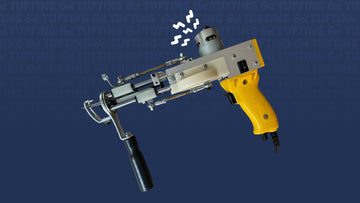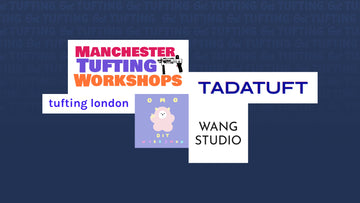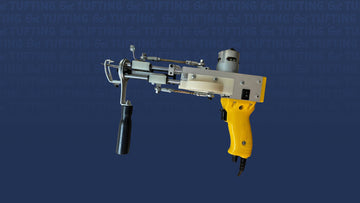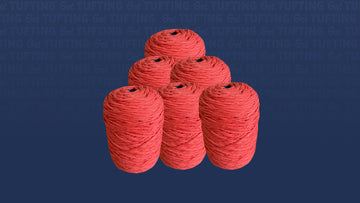Tufting guns are a game-changer for both hobbyists and professionals in the world of rug-making. These versatile tools allow you to create intricate and beautiful designs with ease, making the process faster and more efficient. However, one common question that arises is: are tufting guns loud? In this article, we will dive into the noise levels of tufting guns and discuss whether they might be an issue for you.
Understanding Tufting Guns
Before we delve into the noise aspect, let's quickly go over what tufting guns are and how they work. A tufting gun is a handheld device that inserts loops of yarn through a backing fabric, creating a pile surface like you'd see in rugs or carpets. There are two main types of tufting guns: cut pile and loop pile. Cut pile tufting guns create a soft, plush surface, while loop pile guns create a more textured finish.
Noise Levels of Tufting Guns
Noise levels vary depending on the type and model of the tufting gun you use. Generally, electric tufting guns are known to be noisier than their manual counterparts. However, it's important to note that the noise produced by tufting guns is not as loud as some might think.
Most tufting guns operate at a noise level between 60 to 80 decibels (dB). To give you a better idea, here's a comparison to some common sounds:
- Normal conversation: 60-65 dB
- Vacuum cleaner: 70 dB
- Hairdryer: 80 dB
As you can see, the noise produced by a tufting gun falls within the range of everyday household items. While it might not be completely silent, it's not unbearably loud either.
Factors Affecting Noise Levels
There are a few factors that can influence the noise levels of a tufting gun:
-
Brand and Model: Different brands and models of tufting guns have different noise levels. It's essential to research and compare various options before purchasing one to find the best fit for your needs and preferences.
-
Maintenance: Proper maintenance of your tufting gun can help minimize noise. Ensure that you clean and lubricate the moving parts regularly, as dirt and debris can increase friction and generate more noise.
-
Workspace: The acoustics of your workspace can also impact the perceived noise level. A room with hard surfaces will reflect more sound, making the tufting gun seem louder. Adding soft materials like rugs, curtains, or acoustic panels can help absorb sound and create a quieter environment.
Managing Noise Levels
If you find the noise level of your tufting gun to be bothersome, there are a few strategies you can use to manage it:
-
Use hearing protection: Wearing earplugs or earmuffs can help protect your hearing and reduce the perceived noise.
-
Choose a suitable workspace: Opt for a well-insulated room or a space with soft materials that can help absorb sound.
-
Schedule your tufting sessions: If you live with others, try to schedule your tufting sessions when they are not around or when they are engaged in other activities, so the noise won't be a disturbance.
Conclusion
In conclusion, tufting guns do produce some noise, but it's generally within a manageable range, comparable to common household appliances. By taking the appropriate steps to mitigate noise levels and considering the factors that influence them, you can enjoy the benefits of a tufting gun without the noise being a significant issue.




